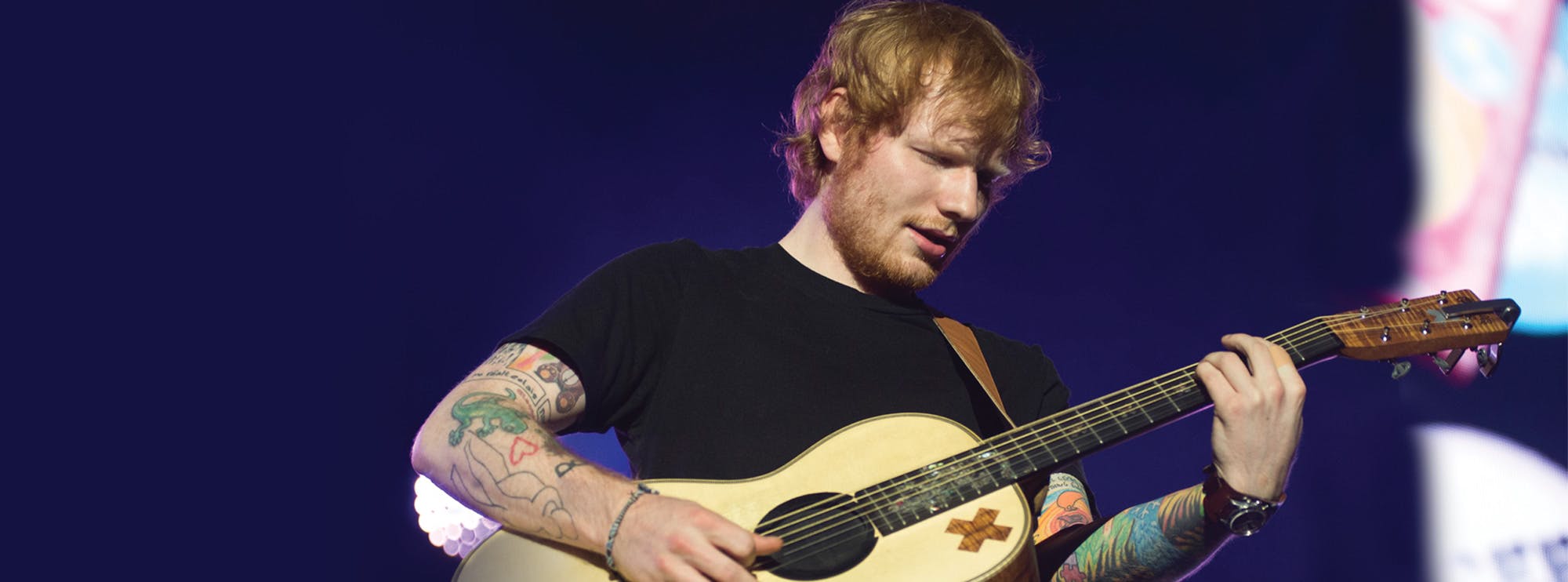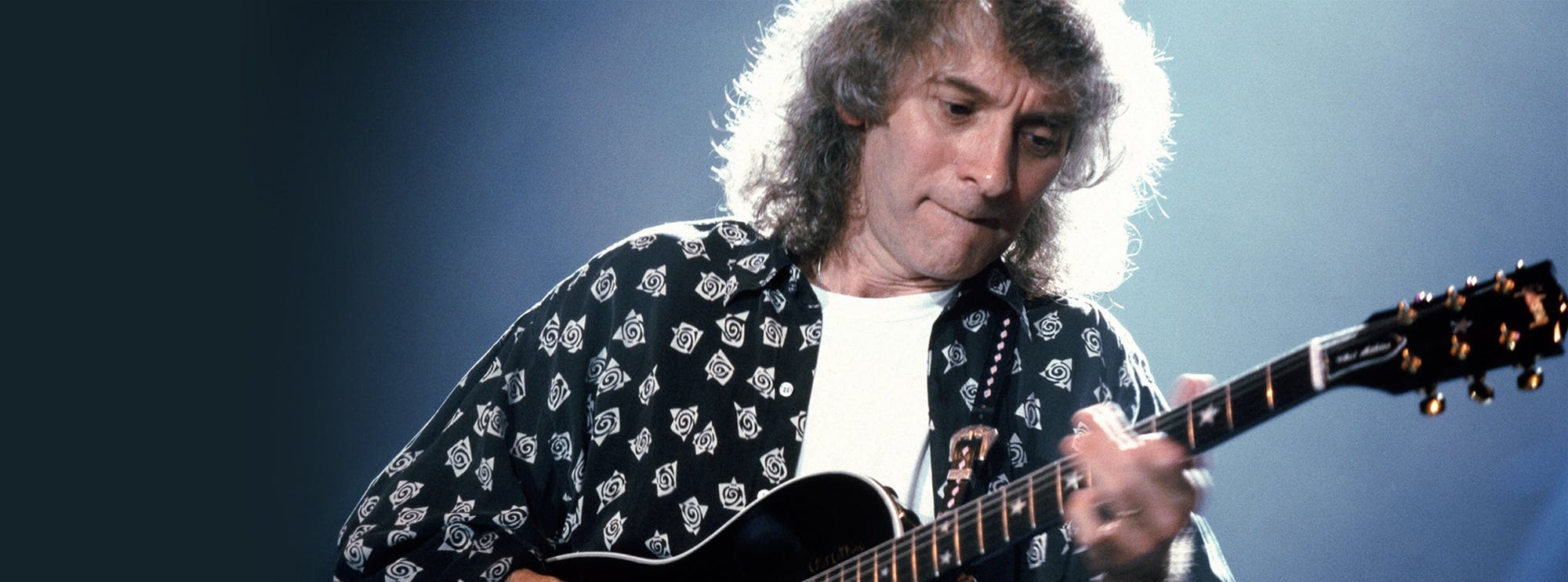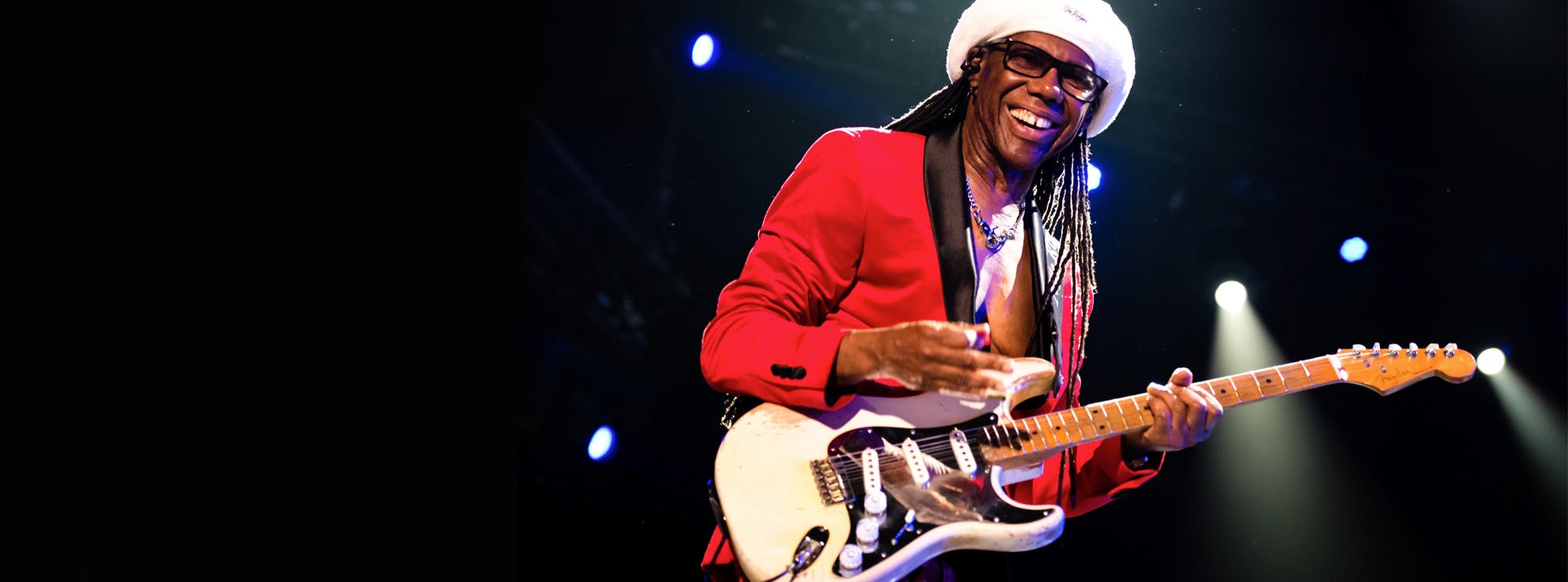The Camera Eye by Rush - Note-for-Note Guitar Lesson
Our The Camera Eye by Rush guitar lesson on LickLibrary.com offers a detailed, note-for-note breakdown of this progressive rock masterpiece from Rush’s Moving Pictures album. This lesson guides you through each intricate guitar part played by Alex Lifeson, focusing on essential techniques like double stops, barre chords, arpeggios, and harmonics. With expert guidance, you’ll be able to replicate Lifeson’s unique approach and complex arrangements, building essential skills for mastering the nuanced sound of progressive rock. This lesson is taught by Sam Bell.
Technique Breakdown
Double Stops
Double stops are a prominent technique in The Camera Eye, allowing Lifeson to create rich harmonic layers and add depth to the rhythm guitar parts. A double stop involves playing two notes simultaneously, creating a fuller sound that can add both harmony and complexity to a line or riff. This technique is often used in rock to emphasize certain melodies or add texture within the rhythm section.
Mastering double stops is invaluable for guitarists, as it builds finger independence and control. By learning double stops, you’ll be able to add harmonic interest to your playing, giving you more options for creating dynamic, expressive sounds.
Barre Chords
Barre chords are essential in The Camera Eye, forming the foundation of many chord progressions and allowing Lifeson to move seamlessly across the fretboard. Barre chords involve using one finger to press down multiple strings, creating chord shapes that can be moved anywhere on the neck. These chords are foundational in rock music, offering flexibility in both rhythm and lead playing.
Practicing barre chords enhances finger strength and dexterity, enabling you to play a wide range of chords in any key. This technique is especially useful for guitarists looking to expand their chordal vocabulary and develop a fluid, adaptable playing style.
Arpeggios
Arpeggios are a hallmark of Lifeson’s style in The Camera Eye, where he breaks chords into individual notes to create melodic lines that are both intricate and fluid. Playing arpeggios involves picking each note of a chord separately, which brings a distinct, flowing quality to the music. In progressive rock, arpeggios are often used to add complexity and maintain the song’s dynamic momentum.
Learning arpeggios enhances finger accuracy and coordination, allowing you to add a flowing, melodic aspect to your guitar playing. By mastering arpeggios, you can bring expressive depth to your chordal playing, as well as craft more melodic lead lines.
Harmonics
Harmonics are another signature technique found in The Camera Eye, giving the song a distinctive, ethereal quality. Harmonics involve lightly touching the string at specific points, which produces a bell-like, ringing tone when struck. Lifeson often uses harmonics to add shimmer and subtlety to his playing, creating layers that enhance the overall atmosphere of the song.
Practicing harmonics improves finger control and adds a unique timbral quality to your playing. Mastering harmonics can enhance your ability to add textural detail to your music, providing a delicate, expressive touch that can elevate your guitar sound.
About Alex Lifeson and His Influence
Alex Lifeson, Rush’s legendary guitarist, is celebrated for his innovative approach and technical prowess, contributing significantly to the band’s progressive sound. Known for blending rhythmic complexity with melodic expression, Lifeson’s style in The Camera Eye incorporates everything from lush textures to driving rhythm and intricate lead work. Lifeson’s mastery of harmonics, arpeggios, and rich chordal arrangements makes his work on this track a standout example of his contribution to rock guitar. Learning Lifeson’s style in The Camera Eye not only sharpens your technical abilities but also broadens your understanding of expressive, layered guitar playing.
About The Tutor
Tutor Profile
Sam Bell
Sam Bell has been playing guitar from the age of 4, since then he has played many styles from Funky Blues to screaming Metal/Fusion on 8 string guitar. A member of UK tech metal band ‘Mask of Judas’, he is also currently writing his own solo instrumental album. He also...



